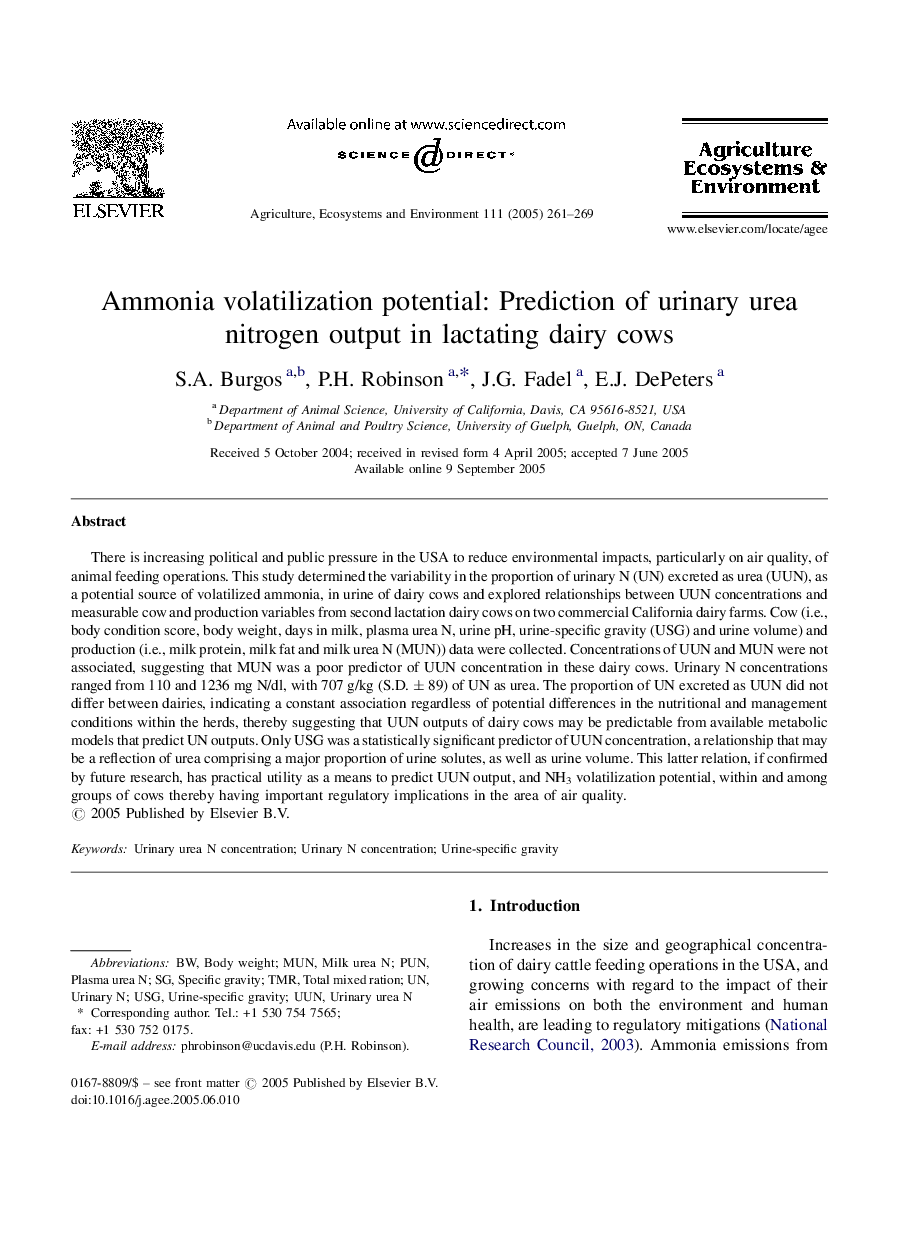| Article ID | Journal | Published Year | Pages | File Type |
|---|---|---|---|---|
| 8970734 | Agriculture, Ecosystems & Environment | 2005 | 9 Pages |
Abstract
There is increasing political and public pressure in the USA to reduce environmental impacts, particularly on air quality, of animal feeding operations. This study determined the variability in the proportion of urinary N (UN) excreted as urea (UUN), as a potential source of volatilized ammonia, in urine of dairy cows and explored relationships between UUN concentrations and measurable cow and production variables from second lactation dairy cows on two commercial California dairy farms. Cow (i.e., body condition score, body weight, days in milk, plasma urea N, urine pH, urine-specific gravity (USG) and urine volume) and production (i.e., milk protein, milk fat and milk urea N (MUN)) data were collected. Concentrations of UUN and MUN were not associated, suggesting that MUN was a poor predictor of UUN concentration in these dairy cows. Urinary N concentrations ranged from 110 and 1236 mg N/dl, with 707 g/kg (S.D. ± 89) of UN as urea. The proportion of UN excreted as UUN did not differ between dairies, indicating a constant association regardless of potential differences in the nutritional and management conditions within the herds, thereby suggesting that UUN outputs of dairy cows may be predictable from available metabolic models that predict UN outputs. Only USG was a statistically significant predictor of UUN concentration, a relationship that may be a reflection of urea comprising a major proportion of urine solutes, as well as urine volume. This latter relation, if confirmed by future research, has practical utility as a means to predict UUN output, and NH3 volatilization potential, within and among groups of cows thereby having important regulatory implications in the area of air quality.
Related Topics
Life Sciences
Agricultural and Biological Sciences
Agronomy and Crop Science
Authors
S.A. Burgos, P.H. Robinson, J.G. Fadel, E.J. DePeters,
